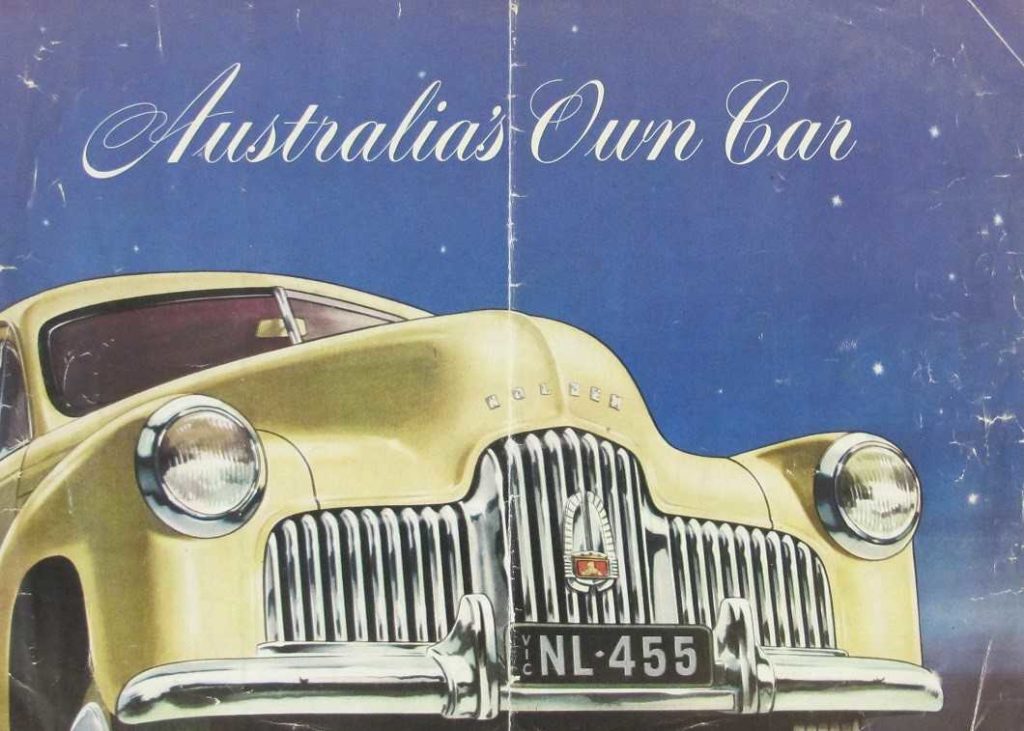
After the hardship and deprivation of the 1930s and the anxiety and rationing of the 1940s, Australia experienced great optimism, growth and prosperity in the 1950s. During this decade three Australian-made products were manufactured which became icons in our cultural history, Holden cars, Victa lawnmowers and Sunbeam Mixmasters. They all changed everyday life in Australia and contributed to the Australian dream of home ownership in the suburbs.
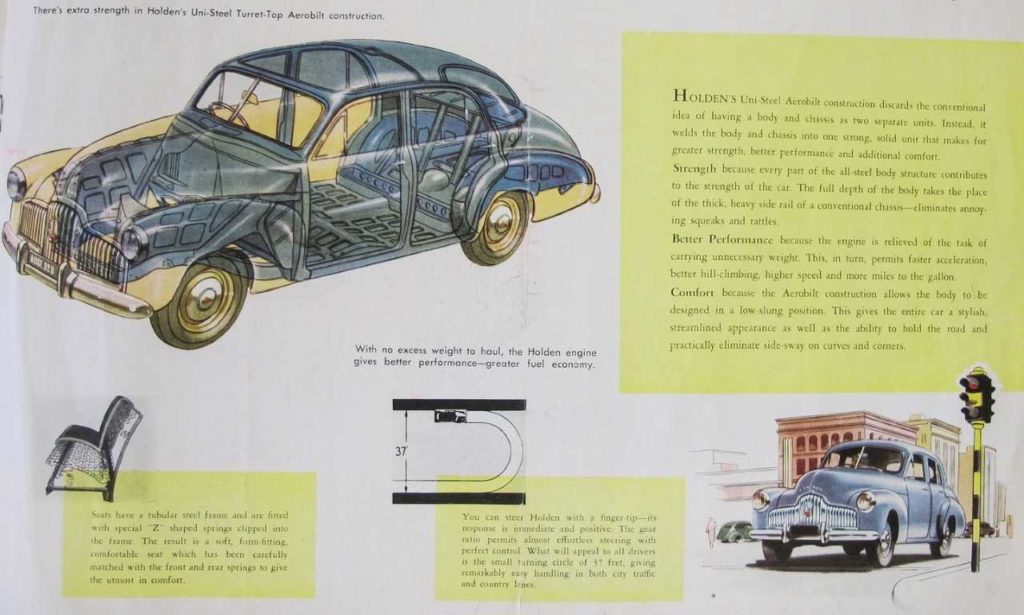
Why was the Holden such a success? Launched in 1948, designated the 48/215 and later nicknamed the FX, the Holden was adapted from a stylish American design and became Australia’s first successfully mass-produced car. For a low cost, four-door, six-passenger family car, it had excellent performance and comfortably accommodated 2 adults and 3 or 4 children on two bench seats. The Holden’s rugged construction and powerful 6-cylinder engine made it ideal for the country’s rough gravel roads, then commonplace outside the cities and towns. It was much more suited to Australian conditions than the underpowered 4-cylinder British-made cars then commonly available here. A Holden was the first car many families owned and ended up being a ‘must have’ possession. It boosted national pride and was an outward symbol of personal prosperity.

During the 1950s car ownership soared in Australia. Post-war petrol rationing ceased in 1950 and families moved away from the old suburbs, dependent on public transport, to build their homes. Tram systems around the country, with their expensive infrastructure, closed in place of flexible bus routes. Cars transformed the appearance of Australian cities and towns making possible the sprawling suburbs of quarter-acre blocks fuelled by immigration. Roads gradually improved, especially after the popular round Australia Redex Reliability Trials. Motels, car parks, drive-ins, drive throughs, service stations and roadside cafes sprang up everywhere. Shopping began to change as the local corner shop and home delivery of vegetables, milk and bread were gradually replaced by car-dependent shopping centres and supermarkets out in the new suburbs.
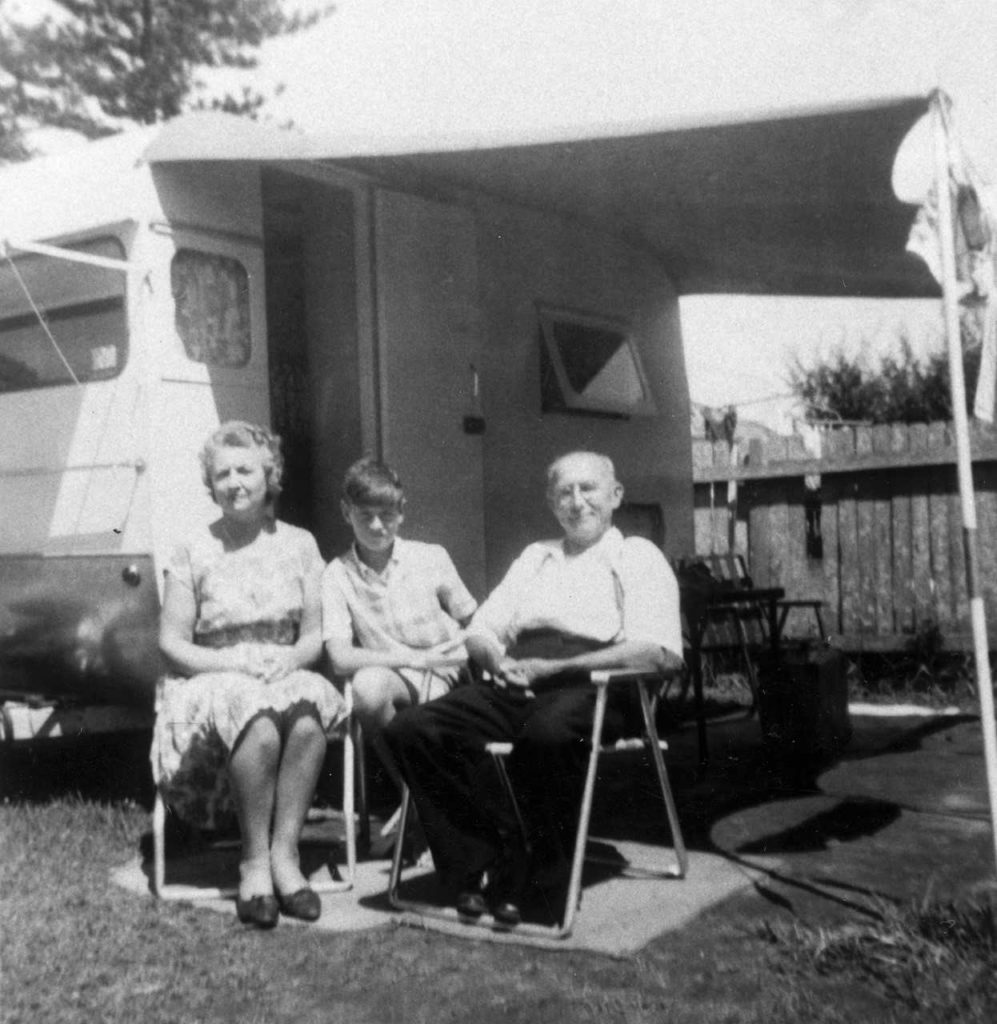
Holidays had previously been spent in guest houses or rented cottages at the seaside, or mountains accessible by rail. Camping by the coast sometimes required the family travelling by train or bus and all the gear being sent ahead in a hired truck. Car ownership changed all that, as annual caravanning holidays became part of the country’s cultural norm. In response, local councils improved roads and established beachside caravan parks.
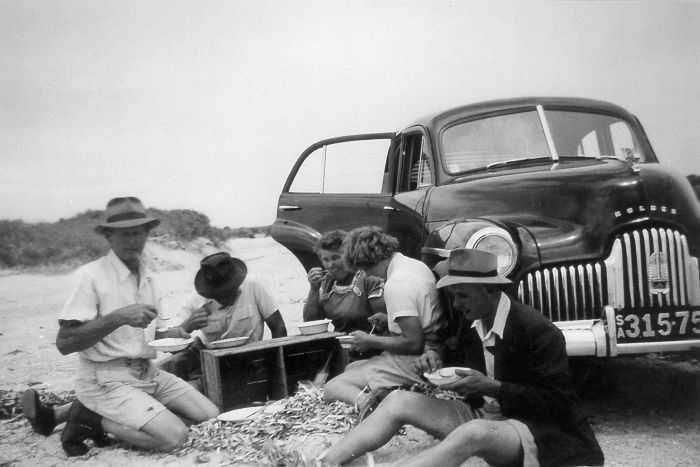
Whereas bicycles and motorcycles gave personal freedom in the early 1900s, car ownership in the 1950s provided mobility and flexibility for the whole family. It enabled families to visit relatives or friends, go to church, the beach, sporting events, local pools, country picnics and Sunday afternoon drives. For the first time, the family breadwinner didn’t have to live near his workplace, providing a division between work and home.
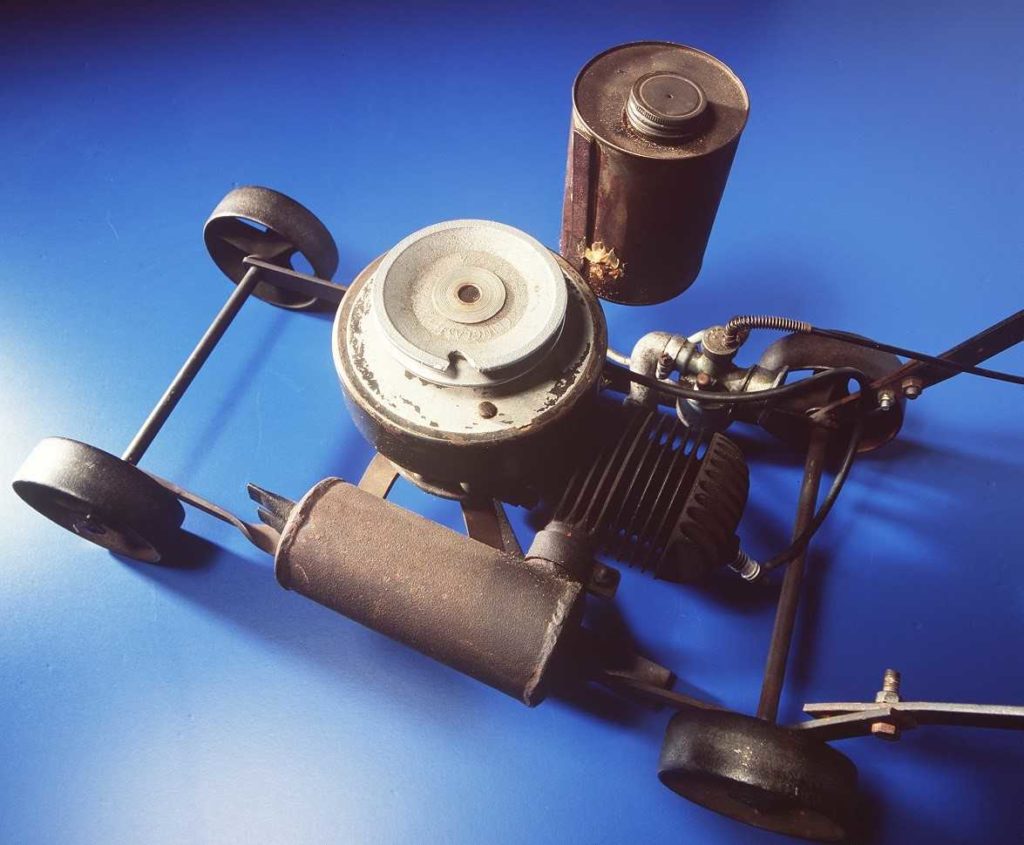
Along with the status symbol of the Holden in the driveway, which incidentally was washed virtually every weekend, the appearance of the quarter-acre block was maintained by keeping the grass mown to a park-like lawn with a Victa lawnmower.

The Victa wasn’t actually invented by Mervyn Victor Richardson, but was inspired by Lawrence Hall’s 1948 rotary blade lawnmower. Hall’s ‘Mowhall’ was built like a tank and needed two to operate it. Blades were mounted onto a plough disc, a kerosene tin served as a petrol tank, it was powered by a boat engine and had a tubular steel frame. Richardson saw Hall’s rotary mower demonstrated in a park in Concord, Sydney, and four years later made a similar one for his son’s part-time lawn mowing business. This was the famous ‘peach tin’ prototype which used a peach tin as a petrol tank, a two stroke engine and a handmade frame. The first production Victa mower was made in 1953. Its manufacture couldn’t have been more perfectly timed to coincide with the 1950s housing boom. By 1965 Richardson was a millionaire.
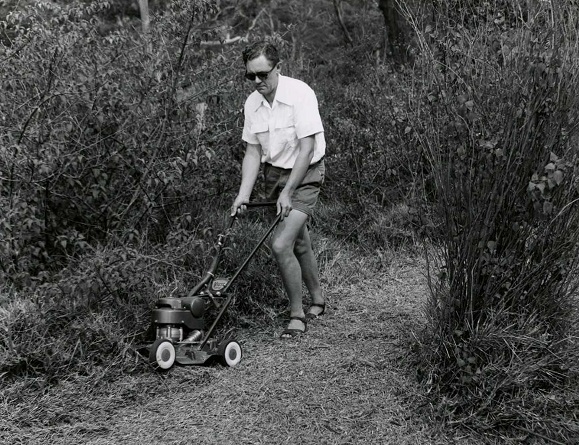
Powerful Victa mowers saved ‘Australian dream’ fathers from hours of backbreaking work using push mowers. Push mowers could only be used on level lawns of short grass. Longer grass needed to be cut by hand with a scythe, which required considerable skill, or a sheep! Using a Victa meant long grass, rough vegetation and roots could be cut and the mower could also be used on sloping ground.
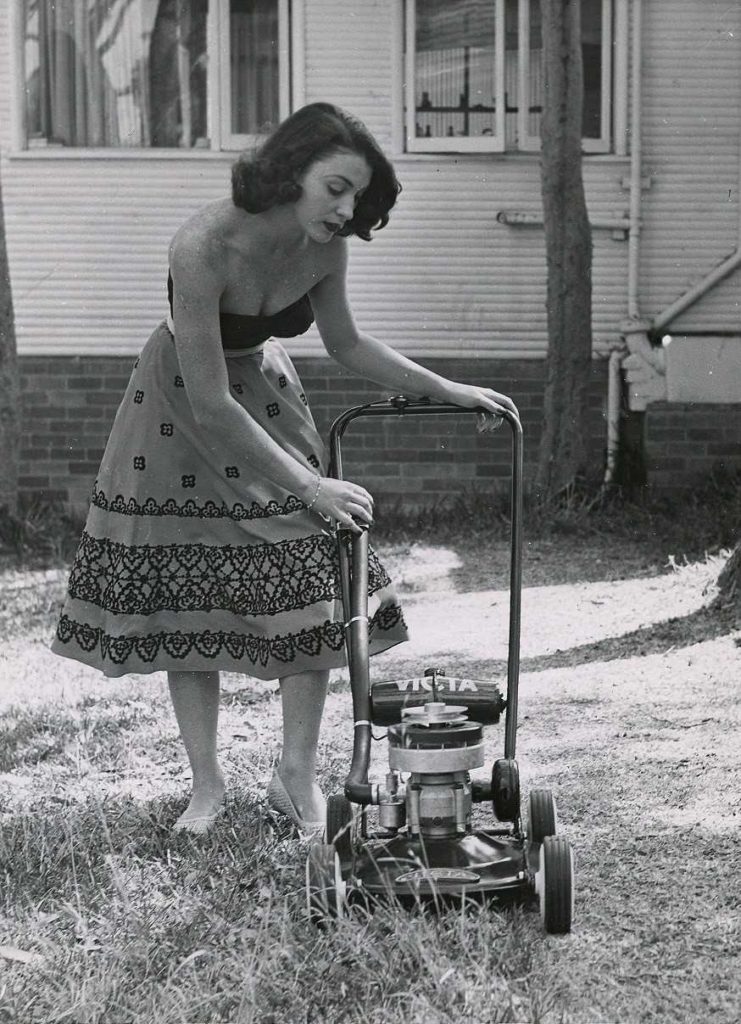
Victa ran a slick advertising campaign featuring young women photographed supposedly using Victas in thongs or full skirts. This ignored the lack of safety protection from the rotating blades. Also, the cut grass would have spread all over the feet and ankles of the operator as early models had no baseplate skirt or grass chute.

Victas transformed grass into lawns making the 1950s home as neat and tidy as the shiny Holden in the driveway. Appearances at this time were everything.
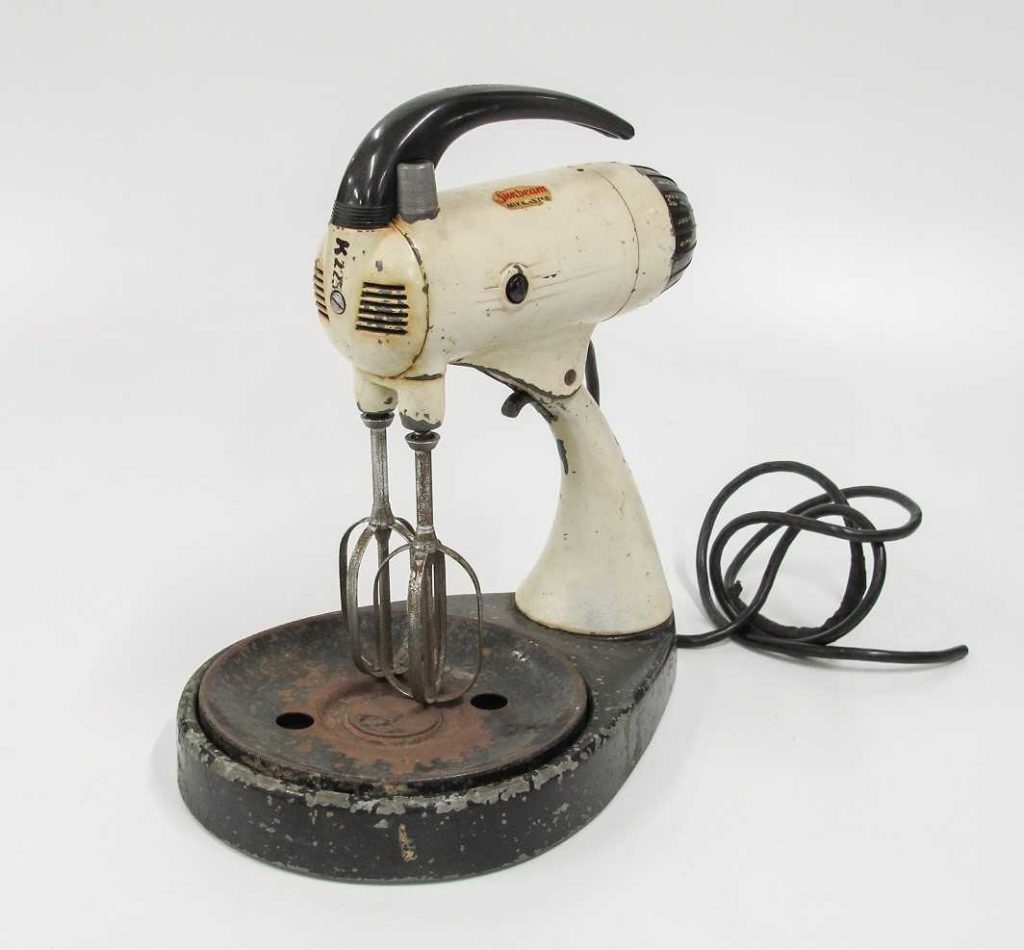
Inside the 1950s home, the introduction of electric appliances added to the Australian dream reducing much backbreaking domestic work for the housewife. Cast-iron fuel stoves, which required constant attention, knowledge of the burning properties of different wood, and skill to use, were replaced with ‘turn-of-the-dial’ electric stoves complete with oven thermostats. Ice chests, which only kept food fresh but not cold, and needed twice weekly deliveries of ice, were replaced with refrigerators.
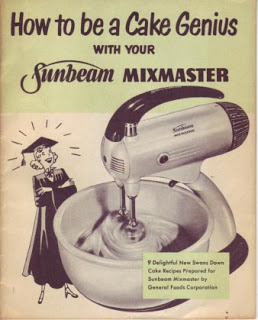
One of the appliances which heralded the new scientific method of food preparation was the Sunbeam Mixmaster introduced in 1947. This replaced the laborious hand-mixing of food and the egg beater. Few people ate out and the housewife looked after the home and family, cooking more adventurous dishes. Entertaining was popular, and housework depicted done in pearls, twinsets and heels.
In the 1950s, once they were married, many women had to leave work whether they were secretaries, teachers or research scientists, so as not to take a (returned) man’s job. This was despite the huge workforce of women employed a few years earlier during the Second World War. So for some women isolated in the suburbs, having the ideal home with the Holden, Victa and Mixmaster, may not have been the Australian dream after all.
Written by Margaret Simpson, Curator, August 2018